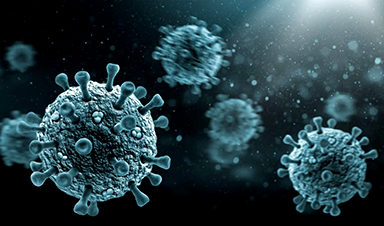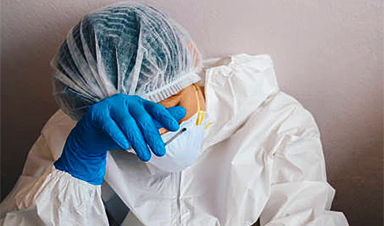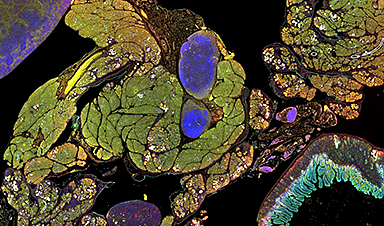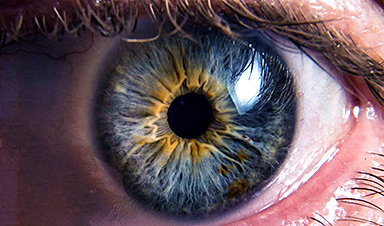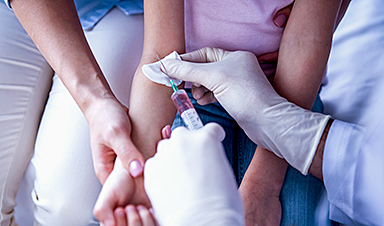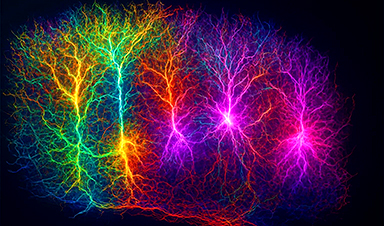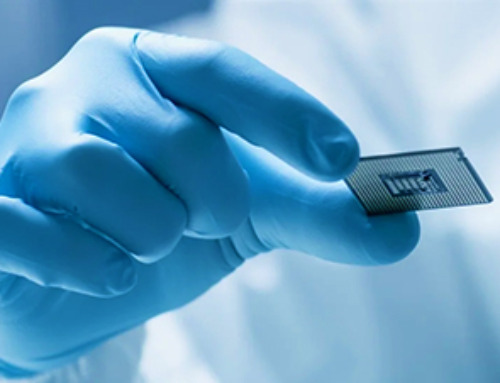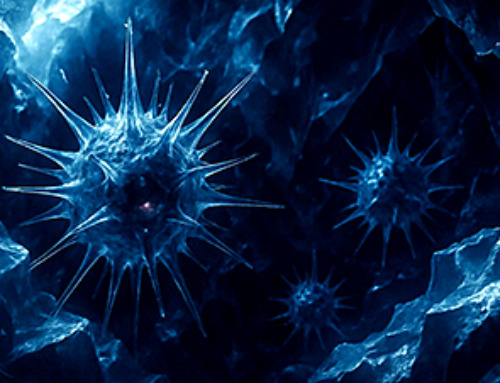In a recent study published in Nature Immunology, a team of researchers from the United States used non-human primate models to compare the protection conferred by an intramuscular booster dose of the bivalent messenger ribonucleic acid (mRNA) coronavirus disease 2019 (COVID-19) vaccine with that provided by a booster dose of a mucosal bivalent adenoviral vector vaccine delivered through an aerosol device or intranasal route.
Background
The rapidly developed COVID-19 vaccines were successful in limiting the severity and transmission of severe acute respiratory syndrome coronavirus 2 (SARS-CoV-2) infections, and the intramuscular booster doses continue to confer protection against high levels of morbidity and hospitalization.
However, studies have shown that the efficacy of intramuscularly administered bivalent mRNA vaccines vane after approximately four months, while breakthrough SARS-CoV-2 infections continue to occur.
Factors such as age, immunocompromised conditions, and post-acute sequelae could influence innate immunity levels and vaccine response, increasing the probability of breakthrough infections.
Vaccines that can prevent breakthrough infections would be effective in lowering the transmission levels and preventing the emergence of novel SARS-CoV-2 variants.
A mucosal vaccine, administered intranasally, could limit the transmission of SARS-CoV-2 by boosting the plasma cells and memory B cells in the lymphoid tissue associated with the mucosa and increasing the immune responses at the site of the infection.
About the study
In the present study, the researchers used Macaca mulatta or rhesus macaques to investigate the protective immune responses elicited by a mucosal bivalent adenoviral vector vaccine containing stabilized spike protein from the ancestral Wuhan strain and the Omicron BA.5 variant of SARS-CoV-2.
They compared these immune responses against those elicited by an intramuscular booster dose of a bivalent mRNA vaccine encoding the spike proteins of the same two variants.
Although the inflammation and pathology due to severe disease in humans are not completely recapitulated in non-human primate models, studies have shown that the virus readouts and immune responses observed in non-human primate models can be used to predict the clinical outcomes for Omicron infections in humans.
The adenoviral vector vaccine used in the study was the ChAd-SARS-CoV-2-S vaccine, which is currently being administered in the form of nasal drops in India under the name iNCOVACC. Viral vector vaccines using adenovirus, Newcastle disease virus, or parainfluenza virus can elicit immune responses at the site of the infection, making these vaccines an ideal candidate for a mucosal, intranasally administered booster dose.
The rhesus macaques in the study were primed with two intramuscular doses of an mRNA vaccine encoding the spike protein from the ancestral Wuhan strain.
Seven months after they were primed, one group of macaques was administered with the bivalent ChAd-SARS-CoV-2-S vaccine through an aerosol device, and the vaccine was delivered to the lower and upper airways.
A second group was administered the vaccine intranasally in the form of a mist using a clinical sprayer. In contrast, a comparison group was intramuscularly administered a booster dose of the bivalent mRNA vaccine.
The protection conferred by the mucosal adenoviral vector vaccine administered through aerosol and intranasal routes and the intramuscular booster dose of the bivalent mRNA vaccine were compared by challenging the animals with the XBB.1.16 strain of the virus four and a half months after the booster doses were administered.
Results
The study found that the viral replication in the lungs and the nose of the animals that were administered the mucosal adenoviral vector vaccine against SARS-CoV-2 was minimal for the animals in both the aerosol and intranasal administration groups.
In contrast, the animals that were intramuscularly administered the booster dose of the bivalent mRNA vaccine showed lower levels of viral replication only in the lower airways.
The mucosal vaccine also resulted in durable immunoglobulin (Ig) A and IgG responses in the airways and activated B cells specific for the spike protein in the lungs, which was not observed in the case of the intramuscular bivalent mRNA vaccine booster dose.
The study found that the aerosolized delivery of the mucosal vaccine elicited broad mucosal immunity in multiple respiratory compartments, which could rapidly suppress the replication of SARS-CoV-2.
In comparison, the intranasally administered booster dose of the same vaccine could only boost the IgA titers in the airway, which could prevent the local replication of the virus but could not inhibit viral replication in the lungs as effectively as the aerosolized booster dose or elicit memory B cells specific to the spike protein.
Conclusions
Overall, the findings showed that a booster dose of mucosal adenoviral vector vaccine against SARS-CoV-2, administered as an aerosol, was most effective in controlling viral replication in the lungs and the nose.
The IgA titers in the airways were indicative of the protection in the upper respiratory compartments. In contrast, memory B cell and T cell responses, as well as IgA and IgG titers, correlated with the protection conferred in the lower airways.
- Gagne, M., Flynn, B.J., Andrew, S.F., Marquez, J., Flebbe, D.R., Mychalowych, A., Lamb, E., DavisGardner, M.E., Burnett, M.R., Serebryannyy, Leonid A, Lin, B.C., Ziff, Z.E., Maule, E., Carroll, R., Naisan, M., Jethmalani, Y., Pessaint, L., Todd, J.M., DoriaRose, N.A. & Case, J.B. (2024). Mucosal adenovirus vaccine boosting elicits IgA and durably prevents XBB.1.16 infection in nonhuman primates. Nature Immunology. doi:10.1038/s41590024019515. https://www.nature.com/articles/s41590-024-01951-5
News
Enhanced Antibacterial Polylactic Acid-Curcumin Nanofibers for Wound Dressing
Background Wound healing is a complex physiological process that can be compromised by infection and impaired tissue regeneration. Conventional dressings, typically made from natural fibers such as cotton or linen, offer limited functionality. Nanofiber [...]
Global Nanomaterial Regulation: A Country-by-Country Comparison
Nanomaterials are materials with at least one dimension smaller than 100 nanometres (about 100,000 times thinner than a human hair). Because of their tiny size, they have unique properties that can be useful in [...]
Pandemic Potential: Scientists Discover 3 Hotspots of Deadly Emerging Disease in the US
Virginia Tech researchers discovered six new rodent carriers of hantavirus and identified U.S. hotspots, highlighting the virus’s adaptability and the impact of climate and ecology on its spread. Hantavirus recently drew public attention following reports [...]
Studies detail high rates of long COVID among healthcare, dental workers
Researchers have estimated approximately 8% of Americas have ever experienced long COVID, or lasting symptoms, following an acute COVID-19 infection. Now two recent international studies suggest that the percentage is much higher among healthcare workers [...]
Melting Arctic Ice May Unleash Ancient Deadly Diseases, Scientists Warn
Melting Arctic ice increases human and animal interactions, raising the risk of infectious disease spread. Researchers urge early intervention and surveillance. Climate change is opening new pathways for the spread of infectious diseases such [...]
Scientists May Have Found a Secret Weapon To Stop Pancreatic Cancer Before It Starts
Researchers at Cold Spring Harbor Laboratory have found that blocking the FGFR2 and EGFR genes can stop early-stage pancreatic cancer from progressing, offering a promising path toward prevention. Pancreatic cancer is expected to become [...]
Breakthrough Drug Restores Vision: Researchers Successfully Reverse Retinal Damage
Blocking the PROX1 protein allowed KAIST researchers to regenerate damaged retinas and restore vision in mice. Vision is one of the most important human senses, yet more than 300 million people around the world are at [...]
Differentiating cancerous and healthy cells through motion analysis
Researchers from Tokyo Metropolitan University have found that the motion of unlabeled cells can be used to tell whether they are cancerous or healthy. They observed malignant fibrosarcoma [...]
This Tiny Cellular Gate Could Be the Key to Curing Cancer – And Regrowing Hair
After more than five decades of mystery, scientists have finally unveiled the detailed structure and function of a long-theorized molecular machine in our mitochondria — the mitochondrial pyruvate carrier. This microscopic gatekeeper controls how [...]
Unlocking Vision’s Secrets: Researchers Reveal 3D Structure of Key Eye Protein
Researchers have uncovered the 3D structure of RBP3, a key protein in vision, revealing how it transports retinoids and fatty acids and how its dysfunction may lead to retinal diseases. Proteins play a critical [...]
5 Key Facts About Nanoplastics and How They Affect the Human Body
Nanoplastics are typically defined as plastic particles smaller than 1000 nanometers. These particles are increasingly being detected in human tissues: they can bypass biological barriers, accumulate in organs, and may influence health in ways [...]
Measles Is Back: Doctors Warn of Dangerous Surge Across the U.S.
Parents are encouraged to contact their pediatrician if their child has been exposed to measles or is showing symptoms. Pediatric infectious disease experts are emphasizing the critical importance of measles vaccination, as the highly [...]
AI at the Speed of Light: How Silicon Photonics Are Reinventing Hardware
A cutting-edge AI acceleration platform powered by light rather than electricity could revolutionize how AI is trained and deployed. Using photonic integrated circuits made from advanced III-V semiconductors, researchers have developed a system that vastly [...]
A Grain of Brain, 523 Million Synapses, Most Complicated Neuroscience Experiment Ever Attempted
A team of over 150 scientists has achieved what once seemed impossible: a complete wiring and activity map of a tiny section of a mammalian brain. This feat, part of the MICrONS Project, rivals [...]
The Secret “Radar” Bacteria Use To Outsmart Their Enemies
A chemical radar allows bacteria to sense and eliminate predators. Investigating how microorganisms communicate deepens our understanding of the complex ecological interactions that shape our environment is an area of key focus for the [...]
Psychologists explore ethical issues associated with human-AI relationships
It's becoming increasingly commonplace for people to develop intimate, long-term relationships with artificial intelligence (AI) technologies. At their extreme, people have "married" their AI companions in non-legally binding ceremonies, and at least two people [...]



